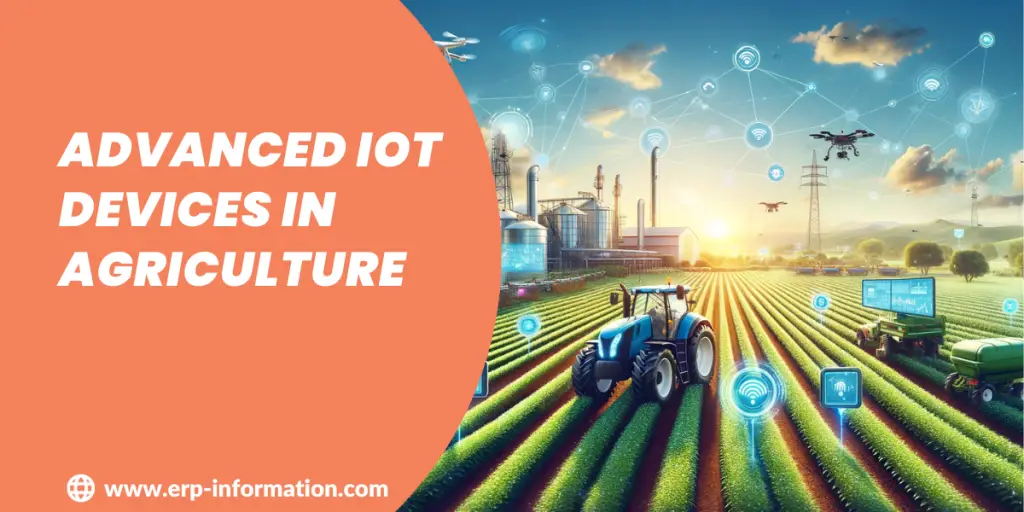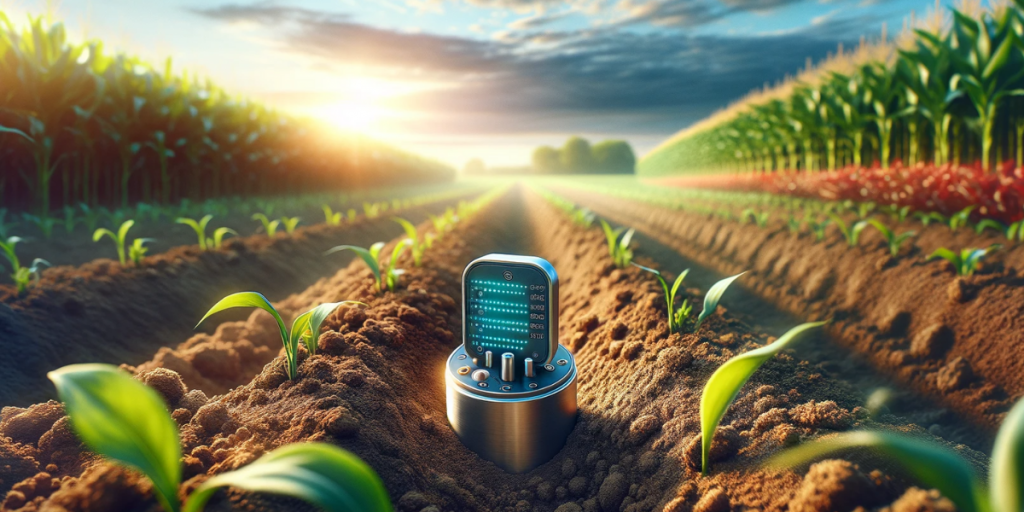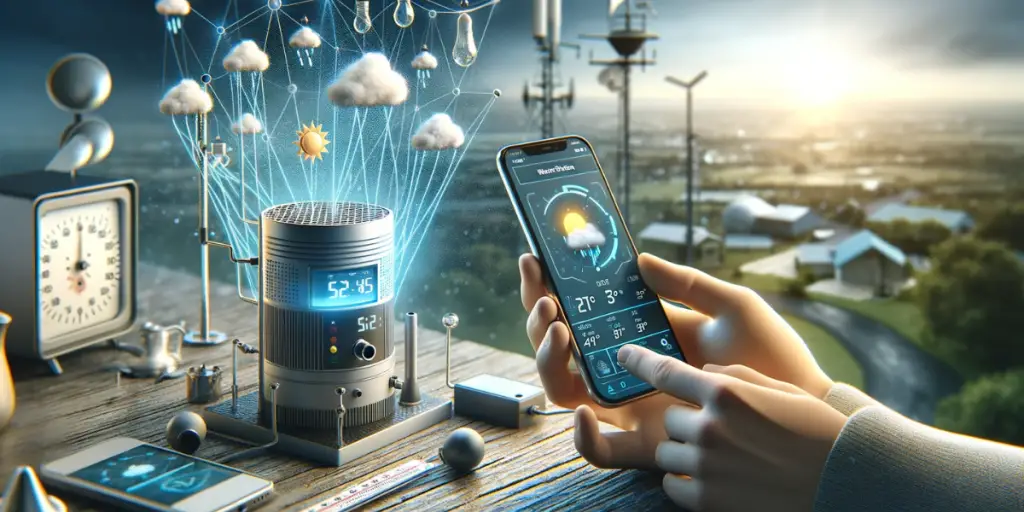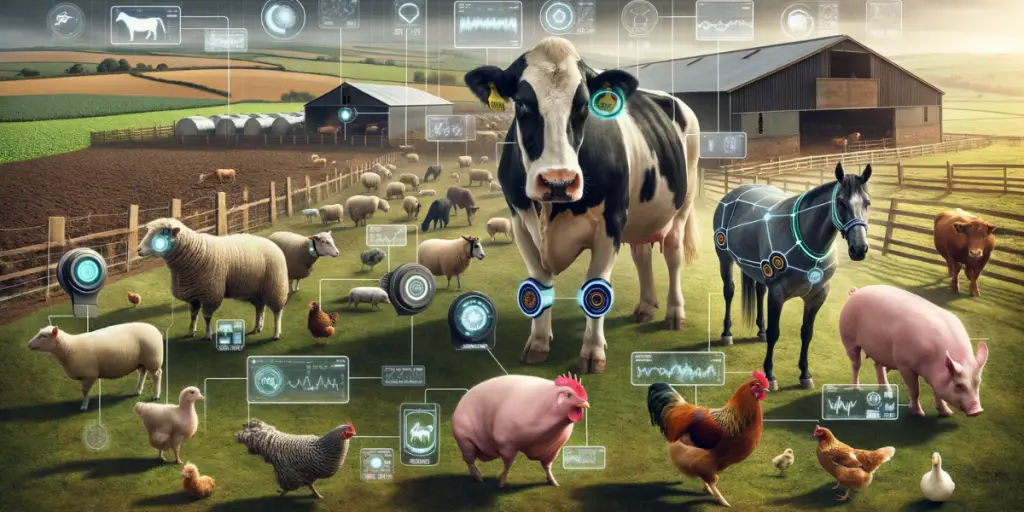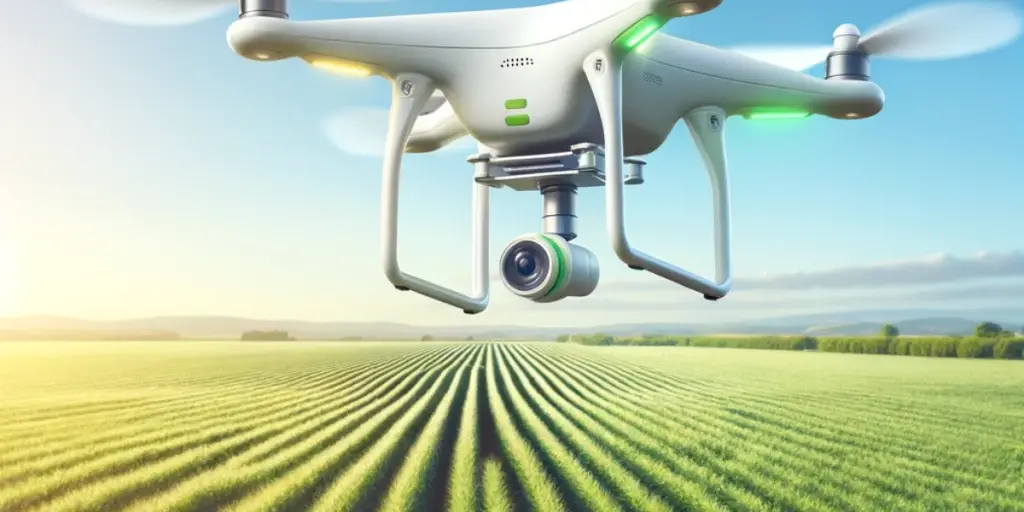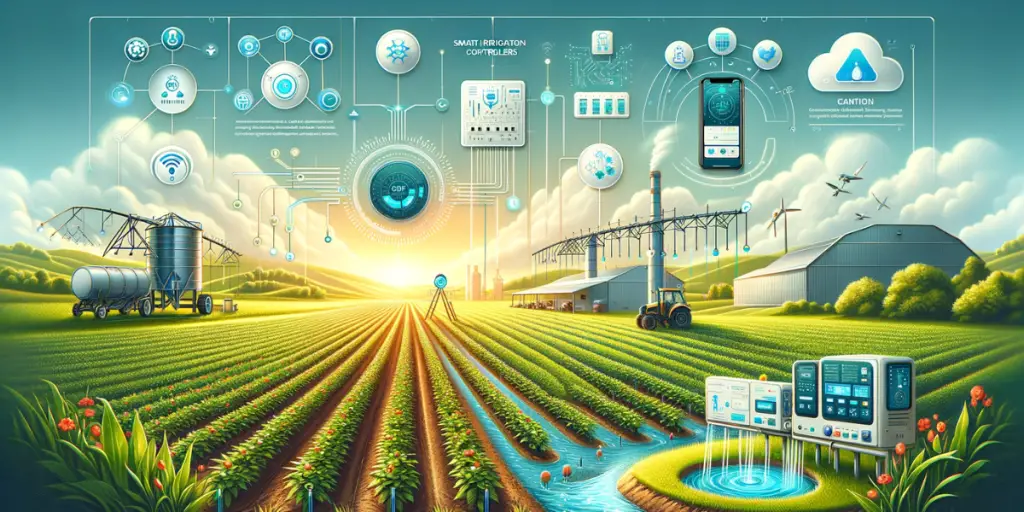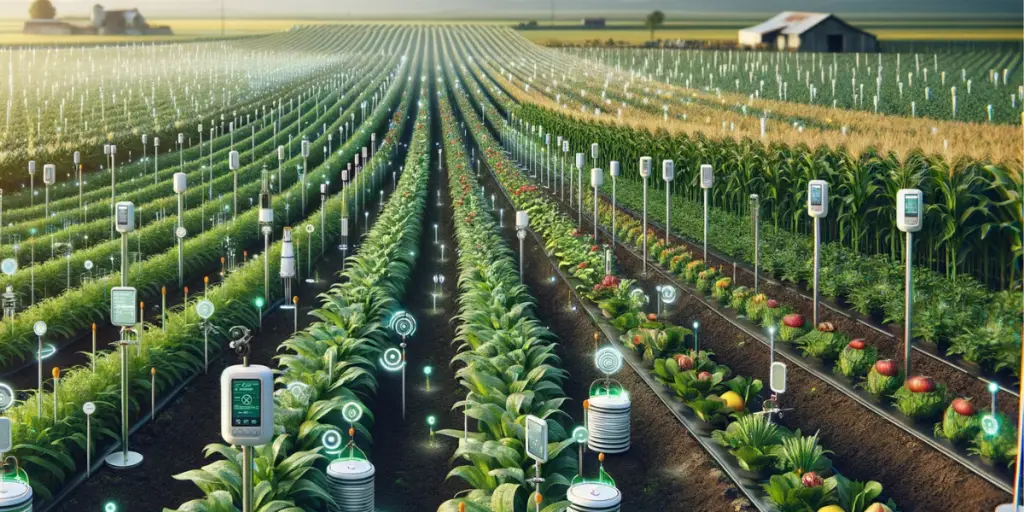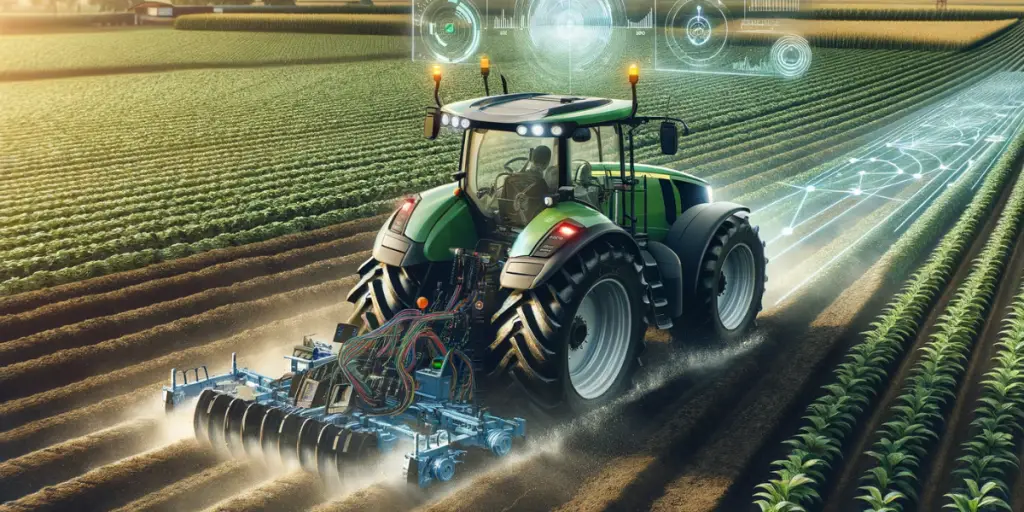Welcome to the world of Advanced IoT devices in agriculture, where technology blends seamlessly with the art of farming. IoT devices are transforming the way you cultivate your land and care for your animals.
Because of these IoT devices, your crops and livestock send updates, the soil itself speaks of its needs, and drones soar above the fields, monitoring growth and health.
In this blog post, we’ll journey through the fascinating landscape of these advanced IoT devices, exploring their real-world applications, and how they’re shaping the future of farming.
What are IoT devices?
IoT, which stands for the Internet of Things, encompasses physical devices and objects that are equipped with sensors, software, and connectivity features. These devices collect and communicate data with other devices and systems through the internet.
These intelligent devices play a pivotal role in enabling real-time monitoring, remote control, and the automation of diverse tasks and processes.
IoT devices used in agriculture
IoT (Internet of Things) devices are revolutionizing agriculture by providing data-driven insights and automation.
Here are some IoT devices commonly used in agriculture:
1. Soil Moisture Sensors
- Sensors that measure volumetric water content
- Sensors that measure soil tension when placed in the soil profile
2. Weather Stations
- Temperature
- Humidity
- Wind speed
- Barometric Pressure
- Precipitation
- Solar radiation
- Cloud cover
3. Livestock Health Sensors
- Temperature sensors
- Heart rate monitor
- Breathing sensors
- Rumination sensors
- Activity and Behavior sensors
- Milk yield monitors
- GPS and Location Sensors
- Ear tags
- Bio-implants
- Automated Livestock Feeders
4. Agricultural Drones
- Monitoring Plant Health
- Monitoring Field Conditions
- Spray Application
- Security
- Pollination
- Irrigation
- Data Collection and Analysis
5. Smart Irrigation Controllers
- Weather-based smart irrigation system
- Soil moisture sensor-based irrigation controllers
6. Crop Monitoring Sensors
- Spectral Sensors
- Temperature Sensors
- Humidity Sensors
- Nutrient Sensors
- Leaf Area Index Sensors
7. GPS-Based Tractor Guidance Systems
- GPS Receiver
- Guidance Controller
- Steering Mechanism
- Display Unit
Let us discuss Advanced IoT Devices in Agriculture in Detail
1. Soil Moisture Sensors
These devices monitor soil moisture levels, helping farmers optimize irrigation and conserve water. Basically, there are 2 types.
One is Sensors that measure volumetric water content another one is Sensors that measure soil tension when placed in the soil profile.
2. Weather Station Devices
A weather station, also known as a weather observatory, is a facility that helps to collect and record data about many atmospheric conditions and meteorological parameters such as temperature, humidity, wind speed, and rainfall, in a specific location.
3. Livestock Health Sensors
Livestock health sensors are innovative devices and technologies designed to monitor the well-being and health of animals in agricultural and farming settings.
These sensors have evolved significantly in recent years, offering unique features and capabilities that benefit both farmers and the livestock they raise. These devices monitor the health and behavior of individual animals, providing data on factors like temperature, activity, and eating behavior.
4. Agricultural Drones
As per the future forming report, the agriculture drone market grow to USD 4.8 billion by 2024. Drones, also known as Unmanned Aerial Vehicles (UAVs), have rapidly gained prominence in the agriculture industry due to their versatility and ability to revolutionize traditional farming practices.
They are equipped with sensors and cameras that provide aerial views of fields, helping farmers monitor crop health, pest infestations, and irrigation needs.
5. Smart Irrigation Controllers
Every day in the United States, over 9 billion gallons of water are utilized solely for outdoor purposes, primarily for watering landscapes.
A staggering 50% of this precious resource goes to waste due to the inefficiencies inherent in traditional irrigation methods and systems.
The solution lies in the adoption of smart irrigation technology. These devices use weather data and soil moisture information to adjust irrigation schedules for more efficient water usage.
6. Crop monitoring sensors
Crop monitoring sensors are specialized devices and technologies used in agriculture to collect real-time data and information about various aspects of crop growth, health, and environmental conditions.
These devices collect data on factors like temperature, humidity, and sunlight to assess crop conditions.
Spectral Sensors
These sensors capture the reflected light from crops at different wavelengths, including visible and infrared. This data is used to calculate vegetation indices such as NDVI (Normalized Difference Vegetation Index), which is a reliable indicator of crop health and vigor.
Temperature Sensors
Infrared thermometers or thermal cameras can measure the temperature of crops. Elevated crop temperatures may indicate stress, disease, or insect infestation.
Humidity Sensors
Monitoring humidity conditions around the crop area helps predict disease outbreaks, optimize irrigation schedules, and reduce the risk of adverse weather-related events.
Nutrient Sensors
Some sensors can measure nutrient levels in the soil or plant tissues. This helps farmers adjust fertilizer applications to meet the specific needs of the crops.
Leaf Area Index Sensors
These sensors measure the amount of foliage in a given area, which is important for estimating canopy coverage and crop growth.
7. GPS-Based Tractor Guidance Systems
These systems provide autonomous or assisted navigation for tractors and farm machinery, enhancing precision in planting and harvesting.
Key Components of GPS-Based Tractor Guidance Systems:
GPS Receiver
Mounted on the tractor, the GPS receiver receives signals from GPS satellites, determining the tractor’s precise location within centimeters.
Guidance Controller
The guidance controller processes the GPS data and calculates the desired trajectory for the tractor based on predetermined parameters, such as row spacing, application rates, and field boundaries.
Steering Mechanism
The guidance controller communicates with the tractor’s steering system, automatically adjusting the steering wheel to maintain the tractor on the desired path.
Display Unit
The display unit provides the operator with a visual representation of the tractor’s position, the desired path, and other relevant information.
Top 3 GPS-based tractor guidance system
- SMAJAYU JY100
- SMAJAYU JY305
- SMAJAYU JYL20
These IoT devices are transforming agriculture by providing real-time data, automating tasks, and optimizing resource use, ultimately increasing crop yields and ensuring the well-being of livestock.
How do IoT Devices Used in Agriculture Integrate with ERP Systems?
Integrating IoT (Internet of Things) devices used in agriculture with an ERP (Enterprise Resource Planning) system offers several unique challenges and opportunities, as it involves bridging the physical world of farming with the digital realm of data management and decision-making.
Here’s an informative explanation of how this integration works:
Data Collection and Sensing
IoT devices in agriculture, such as soil moisture sensors, weather stations, GPS trackers, and livestock health monitors, are deployed in the field to collect real-time data.
These sensors capture information on soil conditions, weather patterns, crop growth, equipment location, and animal health. The data is then transmitted to a central database or cloud platform.
Data Pre-processing and Analytics
Once the data is collected, it undergoes pre-processing and analytics. This step involves cleaning and validating the data, and performing data analytics to extract meaningful insights.
For example, sensors might detect soil moisture levels that could indicate irrigation needs, or temperature data that can help predict disease outbreaks in livestock.
Integration Middleware
To connect the IoT data with the ERP system, an integration middleware or platform is often used.
This middleware serves as the bridge between the diverse IoT devices and the ERP system.It standardizes and formats the data for compatibility with the ERP’s data structure.
ERP Data Mapping
Within the ERP system, the data from IoT devices is mapped to relevant modules or functions.
For example, data from soil moisture sensors can be linked to the ERP’s agricultural planning module, allowing for automated irrigation scheduling and resource allocation.
Decision Support and Automation
The integrated data from IoT devices enriches the ERP system with real-time information. This allows for data-driven decision support and automation.
Farmers and agricultural businesses can use this information to optimize planting, harvest timing, equipment maintenance, and resource allocation.
Resource Optimization
One of the unique advantages of IoT integration with ERP is the ability to optimize resource usage.
For instance, based on weather data and soil conditions, the ERP system can automate irrigation, leading to water conservation and cost reduction. Similarly, livestock health data can trigger alerts for early disease detection, reducing the need for extensive treatment.
Supply Chain and Inventory Management
IoT data can also impact supply chain and inventory management within the ERP system.
Crop yield predictions from IoT sensors can influence procurement and distribution plans, ensuring efficient supply chain operations.
Compliance and Reporting
Many ERP systems have modules for regulatory compliance and reporting.
Integration with IoT data ensures that agricultural operations adhere to environmental regulations, and it provides a rich dataset for compliance reporting.
Feedback Loop and Learning
Over time, IoT-ERP integration creates a feedback loop. As the system collects more data, it becomes smarter and more capable of making informed decisions.
Patterns and trends in the data can lead to the development of machine learning algorithms for predictive analytics.
Conclusion
In the agriculture industry, smart IoT devices like soil sensors, drones, and animal trackers are changing how we grow food. These innovative gadgets not only stand out for their individual capabilities but also significantly enhance their performance when integrated with Enterprise Resource Planning systems.
This teamwork isn’t just about getting things done faster. It’s like music made of information, where all the bits and pieces fit together, making farming smoother and easier.
The blog post discussed how this mix of technology and farming helps plant the seeds for a better, high-tech future in agriculture.
